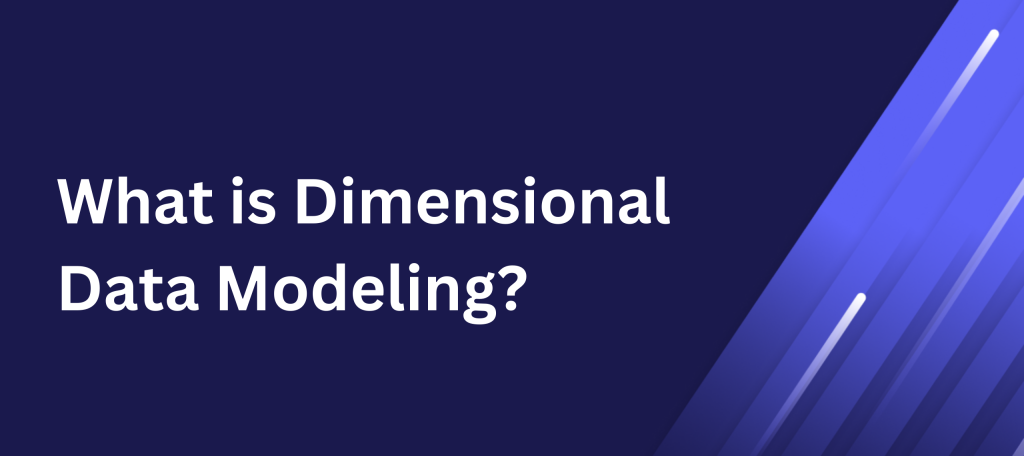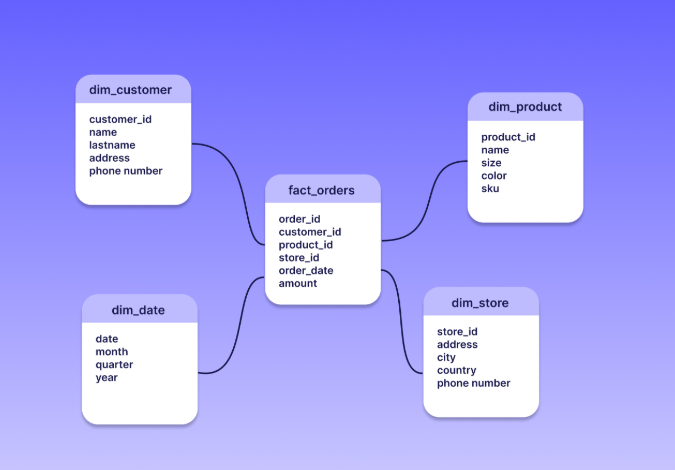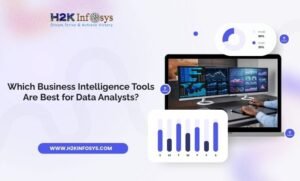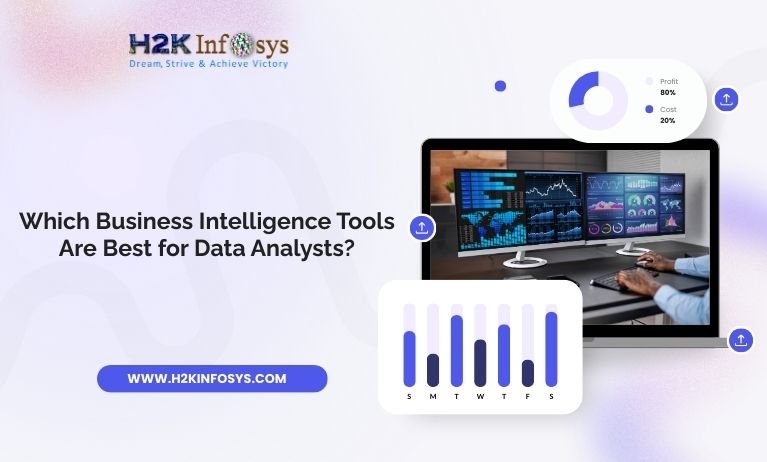Introduction
In today’s data-driven business environment, the ability to extract actionable insights from data is crucial. Power BI, Microsoft’s powerful business analytics tool, stands at the forefront of this transformation. But while Power BI’s visualizations and dashboards often take the spotlight, the real magic lies in how data is structured especially through Dimensional Modeling.
If you’re aspiring to be a data analyst, BI developer, or Power BI professional, understanding Dimensional Modeling is not just beneficial it’s essential. It enables you to create models that deliver performance, scalability, and accuracy.
At H2K Infosys, we offer Power BI Certification and hands-on training that includes in-depth modules on Dimensional Modeling, empowering you with skills that employers value.
What Is Dimensional Modeling?

Dimensional Modeling is a data structure technique optimized for data retrieval and analysis. It’s widely used in data warehouses and BI tools like Power BI to organize data into facts (measurable events) and dimensions (descriptive attributes related to facts).
Unlike normalized databases optimized for transaction processing, dimensional models are designed for fast query performance and intuitive data navigation.
Key Components of Dimensional Modeling:
- Fact Tables: Contain quantitative data (e.g., sales, revenue).
- Dimension Tables: Hold descriptive information (e.g., customer, time, product).
- Star Schema: A central fact table connected to multiple dimension tables.
- Snowflake Schema: Dimension tables are normalized into multiple related tables.
Why Is Dimensional Modeling Important in Power BI?
Power BI thrives on clean, well-structured data. When you use Dimensional Modeling, you’re setting the stage for:
- Faster Query Performance: Less complex joins and streamlined relationships.
- Better User Experience: Easier to build reports with consistent, meaningful data.
- Scalability: Supports larger data volumes with fewer performance hits.
- Advanced Calculations: Simplifies the creation of DAX measures and KPIs.
Real-World Example:
Imagine you’re working in retail analytics. A dimensional model would have:
- A Sales Fact Table with measures like total sales, discount, and quantity.
- Dimension tables for Customer, Product, Store, and Date.
This allows quick answers to questions like:
“What were the total sales by product category and region in Q2?”
Step-by-Step: How to Implement Dimensional Modeling in Power BI
Step 1: Identify the Business Process
Start with understanding the key metrics (e.g., sales, orders, returns) you need to analyze. These metrics become your facts.
Step 2: Identify Dimensions
For each fact, determine related entities such as Customer, Product, Date, or Region.
Step 3: Build Fact and Dimension Tables
Use SQL queries or Power Query in Power BI to create these tables from raw data sources like SQL Server, Excel, or APIs.
Step 4: Establish Relationships
Using the Model View in Power BI:
- Create one-to-many relationships between dimensions and fact tables.
- Avoid bidirectional filters unless necessary.
Step 5: Optimize and Document
- Rename columns for clarity.
- Hide irrelevant fields.
- Use hierarchies (e.g., Year > Quarter > Month > Day).
- Add descriptions for users.
Star vs. Snowflake Schema: Which One Should You Use?
| Feature | Star Schema | Snowflake Schema |
|---|---|---|
| Structure | Simple and denormalized | Complex and normalized |
| Performance | High (fewer joins) | Slightly lower (more joins) |
| Storage | More storage space | Less storage |
| Maintenance | Easier | More complex |
| Use Case | Ideal for Power BI models | Suitable for advanced data warehouses |
Power BI Best Practice: Prefer Star Schema for ease of use and better performance.
How Dimensional Modeling Helps in Power BI Dashboards
When data is modeled dimensionally:
- Filters, slicers, and visual interactions become more intuitive.
- Measures like Year-to-Date Sales or Customer Lifetime Value are easier to calculate.
- Aggregations (like averages or sums) are faster and more accurate.
Example Dashboard Use Case:
You’re building a dashboard showing Product Performance by Region.
- The fact table: Sales
- The dimension tables: Product, Region, Time
With proper Dimensional Modeling, your visuals update instantly as users filter data by year, product line, or territory.
Practical Tips and Best Practices
Keep Your Model Clean
Avoid importing unnecessary columns. Use only the data you need.
Name Tables and Fields Clearly
For example, use Order Date instead of ODT for clarity.
Create Hierarchies
In time dimension: Year > Quarter > Month > Day
In geography: Country > State > City
Use Surrogate Keys
Avoid relying solely on business keys (e.g., email IDs); create unique surrogate keys.
Document Your Model
Use Power BI’s Descriptions and external documentation to help other team members understand the structure.
Benefits of Learning Dimensional Modeling with H2K Infosys
At H2K Infosys, our Power BI course is designed to bridge the gap between theoretical concepts and practical, job-ready skills.
🔹 What You’ll Learn:
- Fundamentals of Dimensional Modeling
- Designing and building Star Schemas
- Creating optimized Power BI data models
- Writing advanced DAX calculations on fact/dimension tables
🔹 What Sets Us Apart:
- Instructor-Led Live Classes: Learn from industry professionals with years of experience.
- Hands-On Projects: Build real-world dashboards and models using real datasets.
- Placement Assistance: Resume building, mock interviews, and career guidance.
- Certification Prep: Get help with Microsoft Power BI Certification exam preparation.
Industry Use Cases: Dimensional Modeling in Action

Dimensional Modeling is widely used across various industries to enhance reporting efficiency and business decision-making. In healthcare, dimensional models allow providers to track patient metrics, treatment outcomes, and hospital performance over time. Retailers use dimensional schemas to analyze customer buying behavior, seasonal trends, and inventory turnover, enabling more accurate demand forecasting. In the finance sector, analysts rely on dimensional models in Power BI to perform budget variance analysis, profit forecasting, and regulatory reporting. These real-world use cases prove that implementing dimensional modeling not only simplifies data analysis but also accelerates insights that drive strategic business actions.
Case Study: Healthcare Analytics
A healthcare company used Dimensional Modeling in Power BI to track patient outcomes by treatment types and demographics. Result? 35% improvement in reporting speed.
Case Study: Retail Sales Optimization
A retail chain used star schema models in Power BI to consolidate regional sales data, identifying top-performing products in each region boosting Q4 sales by 12%.
Case Study: Financial Forecasting
Finance teams at a large enterprise used dimensional models to build year-over-year comparisons and scenario forecasting in Power BI reducing planning cycle time by 40%.
Key Takeaways
- Dimensional Modeling is essential for building high-performance Power BI models.
- It simplifies complex datasets, making them easier to analyze and visualize.
- Power BI thrives on structured models especially Star Schemas.
- Learning this modeling technique sets you apart in analytics and BI careers.
Whether you’re new to data modeling or looking to enhance your skills, mastering Dimensional Modeling is a smart move and H2K Infosys is here to guide you.
Conclusion
Want to become a Power BI expert? Join H2K Infosys to master Dimensional Modeling and gain hands-on experience with real-world BI projects.
Enroll today and fast-track your career with our industry-aligned Power BI course and certification!
























